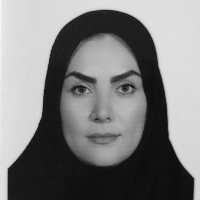Optimizing Micro Propagation of Red Flesh Apple Genotype
Red flesh apple belongs to Malus niedzwetzkyana of Rosaceae family. It has high levels of important phytochemicals like antioxidants, flavonoids and anthocyanins in its cortex, which, in addition to attractiveness, is a source of benefit compound. The aim of the present investigation was to optimize efficient protocols for micro propagation of red flesh apple in order to use the results in future breeding strategies.
During the early spring, stem cuttings of growing red flesh apple trees were surface-sterilized in 70% ethanol and 50% sodium hypochlorite. Then, sterilized samples were placed in the test tubes containing MS medium supplemented with 2 µM BAP. At the proliferation stage, interactive effects of BAP (0, 2, 4, 6 mM) and GA3 (0, 3, 6 mM) on various aspects of proliferation (multiplication rate and vegetative growth characteristics such as number of produced shoots per explant, shoots length, leaf numbers, and the fresh and dry weight of explants) were investigated. At rooting stage, the effect of different concentrations of IBA or NAA (0, 1, 2, 3,4 µM) on the percentage of rooting, number of roots per explant and length of roots were compared. At acclimatization stage, the plantlets were transferred into pots with a volume of 200 ml containing sterile compound at the greenhouse condition.
The results showed that there was a significant difference between the effects of various concentrations of BAP and GA3 on micro propagation of red flesh apple. The best result in proliferation (7.9 of axillary shoots after 8 months) was obtained from explants that were cultured in the medium containing 4 mM BAP and 3 mM GA3. At rooting stage, the maximum rooting percentage (85.2%) was obtained in the medium containing 3 mM IBA. In addition, rooted explants from IBA treatments were successfully acclimatized (100%) in the greenhouse, but rooted explants in NAA treatments were weak in acclimatized stage (40%).
Measuring the growth rate is the major economic parameter for successful plant production at in vitro conditions, which is usually characterized by the number of axillary shoots, number of regenerated leaves and increase in the length of shoots and fresh and dry weight. We obtained the highest growth rate of red flesh apple in the culture medium containing 4 μM of BAP. The efficiency of BAP as an important cytokinin in apple proliferation has been reported in other studies as well. The results of the present investigation showed that highest rooting percentage was obtained from culture medium containing 3 μM of IBA. In addition, morphology of roots varied in callus formation and longitudinal growth and the samples rooted in IBA treatments had stronger roots than the rooted samples in NAA treatments. It seems that exposure to NAA instead of IBA stimulates indirect organogenesis and produced undesirable side effects on roots, such as callus formation, which can cause plantlets weakness during the period of acclimatization.
-
Molecular assessment of thermotherapy and meristem culture efficiency on some virus’s eradication from important commercial pear cultivars (Pyrus communis L.)
zemi, Fariborz Zaare-Nahandi, Ali Akbar Habashi*, Mohammad Reza Dadpour
Iranian Journal of Horticaltural Sciences, -
Culture Efficiency on Virus Elimination from in vitro Shootlets of Red Flesh Apple (Malus pumila Mill.)
N. Kazemi*, A.A. Habashi, W. Asadi
Journal of horticulture science,


